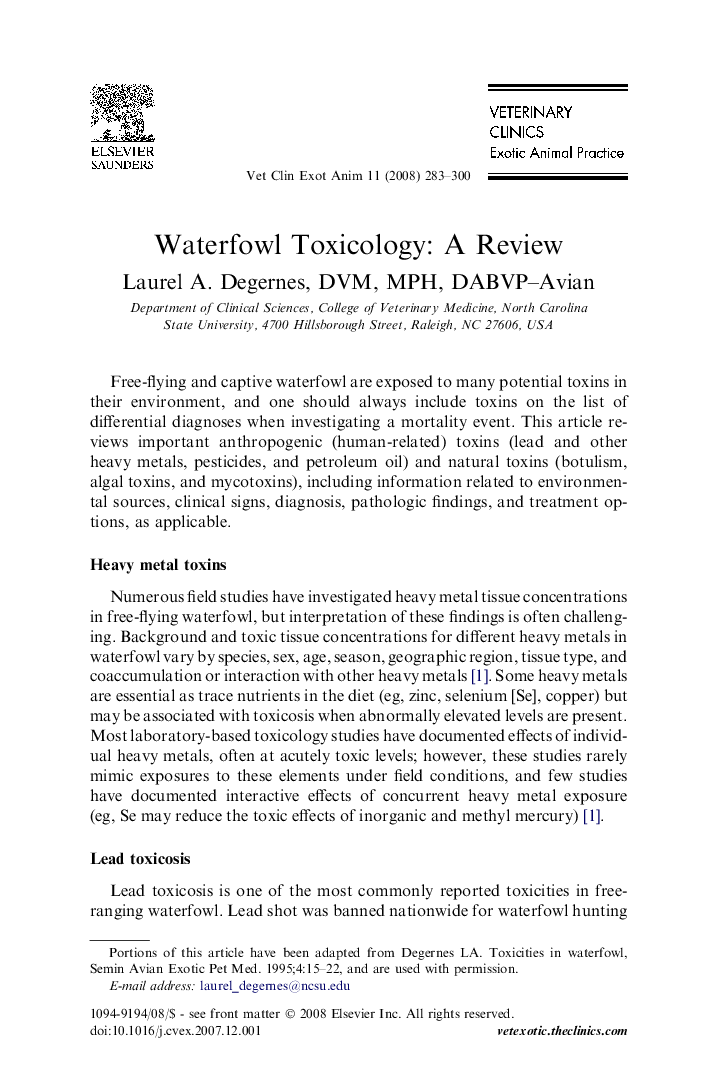| Article ID | Journal | Published Year | Pages | File Type |
|---|---|---|---|---|
| 2413295 | Veterinary Clinics of North America: Exotic Animal Practice | 2008 | 18 Pages |
Abstract
Waterfowl populations may serve as sentinel species for natural and anthropogenic toxicologic problems in the environment. Unfortunately, many toxins cause nonspecific clinical signs, acute mortality, and subtle or no pathologic changes, making toxicologic investigations extremely difficult. The purpose of this article is to review important waterfowl toxins, including heavy metals, pesticides, botulism, mycotoxins, algal toxins, and petroleum oil. When applicable, clinical signs, diagnosis, pathologic findings, and treatment are discussed. Although most of the information in the literature is based on wild waterfowl populations or experimental toxicologic investigations, the information is also applicable to captive waterfowl populations.
Related Topics
Health Sciences
Veterinary Science and Veterinary Medicine
Veterinary Medicine
Authors
Laurel A. DVM, MPH, DABVP-Avian,
